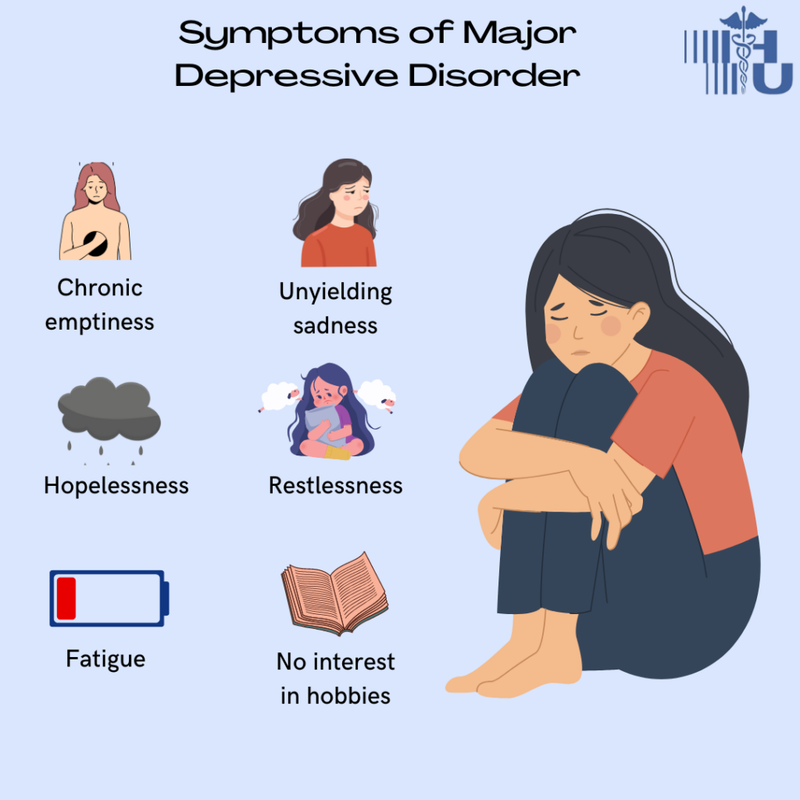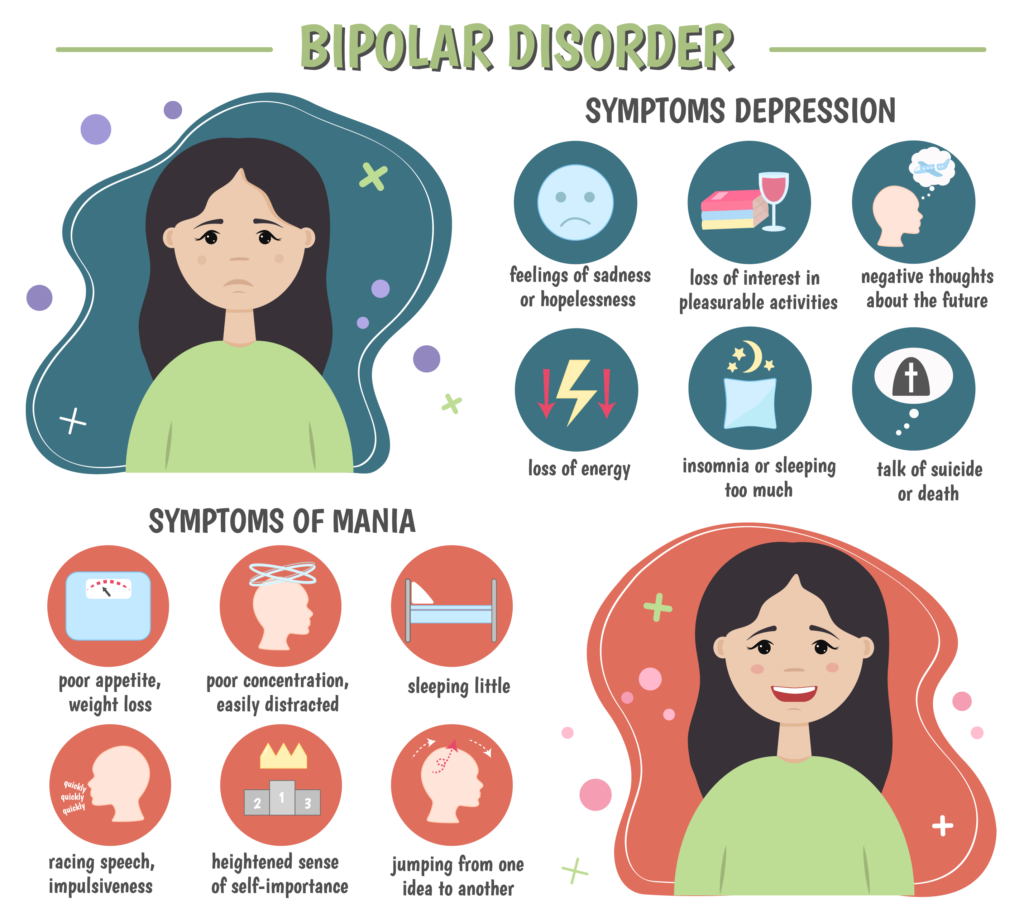DEPRESSION

Recurrent major depressive disorder is characterized by repeated episodes of persistent depression, with periods of remission in between.
Major Depressive Disorder (MDD) is a mood disorder that can cause persistent feelings of sadness, hopelessness, and a loss of interest in previously enjoyable activities. The symptoms of MDD can vary from person to person, but there are several common symptoms that are used to diagnose the condition.
The most common symptoms of MDD include:


Persistent Depressive Disorder is a chronic form of depression that lasts for at least two years, often with periods of more severe and less severe symptoms during that time.
Persistent Depressive Disorder (PDD)
A Combination of Dysthymia and Chronic Major Depressive Disorder

Persistent depressive disorder (PDD) is a common type of chronic depression. Symptoms are often mild or moderate. This problem lasts for two years or longer.1
"Persistent depressive disorder" is a somewhat new term. It is used to combine what was called dysthymia and chronic major depressive disorder in the past.
As with other types of chronic depression, people with this problem deal with feelings of deep sadness. They often live with a low, dark mood that may last for years. PDD is less severe but may last longer than major depressive disorder (MDD).2
Most people with PDD can manage symptoms using prescribed drugs and talk therapy. Without treatment, people with PDD have a higher risk of major depression.3
This article includes all you need to know about PDD. It describes PDD symptoms, risk factors, diagnosis, treatment, and outlook.

Depression Symptoms and PDD
Persistent depressive disorder causes a continuous feeling of low-level sadness or dark feelings over a long period. These symptoms typically develop slowly, beginning in childhood or young adulthood.
PDD tends to be milder than episodes that occur in major depressive disorder (also called clinical depression). In addition, PDD symptoms are constant and last for years, while major depressive disorder has repeated episodes of depression and recovery.
What Causes PDD?
Scientists do not know the exact causes of PDD. Research indicates that it likely involves a combination of genetic, biological, environmental, and psychological factors.5
Factors that can contribute to persistent depressive disorder include the following:6
- Biological factors: Having physical differences in your brain may affect the development of PDD.
- Brain chemistry: Research indicates that changes or reductions in neurotransmitters including serotonin, norepinephrine, or dopamine, may lead to the development of depression. These neurotransmitters regulate how your brain changes and develops over time.
- Genetic traits: Persistent depressive disorder is more common among people whose first-degree blood relatives, such as a parent or sibling, have this problem.
- Life events: The loss of a loved one, financial problems, or other issues that trigger a high level of stress can enable PDD in some people.
Risk Factors for PDD
It is difficult to predict who will develop PDD. For many people, the problem begins early in life, often as early as childhood, adolescence, or young adulthood. Having the following risk factors seems to increase your chances of developing PDD:76
- Being female
- Having a first-degree blood relative with major depressive disorder or another type of depressive disorder
- Personality traits such as low self-esteem, negativity, extreme self-criticism, extreme dependence, and a predisposition to always think the worst will happen
- A chemical imbalance in your brain
- A traumatic or stressful life event
- History of other mental health disorders such as a personality disorder or anxiety
Symptoms of Bipolar Disorder
Bipolar depression is a type of depression characterized by episodes of low mood and hopelessness that alternate with periods of elevated mood and increased energy, distinct from the persistent depressive state of major depressive disorder.

With Bipolar Disorder, you can experience episodes of depression, episodes of mania, or a combination of both. These episodes can last days, weeks, or months.
Seasonal Affective Disorder (SAD) is a type of depression that occurs during specific times of the year, usually during the winter months when there is less sunlight. It is characterized by symptoms like low mood, decreased energy, changes in sleep and appetite, and a general sense of melancholy that typically improves as the seasons change.
Seasonal Affective Disorder is a form of depression that occurs during specific times of the year, typically the winter months, and is characterized by a recurring pattern of mood changes and symptoms.
Fatigue
Fatigue in Seasonal Affective Disorder is characterized by a persistent lack of energy and motivation that is distinct from typical tiredness.

Oversleeping
Oversleeping, unlike general fatigue, refers to the inability to stay awake for normal waking hours and the need for significantly longer sleep durations during seasonal affective disorder.



